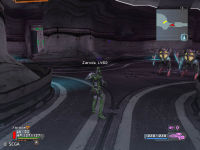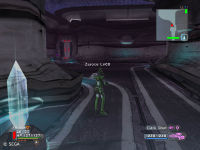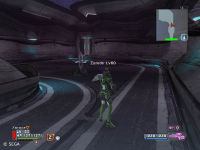If you are looking for Information about PSU Clementine, Go check their Wiki
The re-PSUPedia:Enemy spawn template
From The re-PSUPedia
Base format
| Map route | Pattern | Block 1 details | Block 2 details | Block 3 details | Rare spawn |
|---|---|---|---|---|---|
| File:ImageA.jpg Description |
A-1 | Spawn type: Enemies |
Spawn type: Enemies |
Spawn type: Enemies |
|
| A-2 | Spawn type: Enemies |
Spawn type: Enemies |
Spawn type: Enemies |
||
| A-3 | Spawn type: Enemies |
Spawn type: Enemies |
Spawn type: Enemies |
||
| A-X | Spawn type: Enemies |
Spawn type: Enemies |
Spawn type: Enemies |
Spawn type: Rare enemies | |
| File:ImageB.jpg Description |
B-1 | Spawn type: Enemies |
Spawn type: Enemies |
Spawn type: Enemies |
|
| B-2 | Spawn type: Enemies |
Spawn type: Enemies |
Spawn type: Enemies |
||
| B-3 | Spawn type: Enemies |
Spawn type: Enemies |
Spawn type: Enemies |
||
| B-X | Spawn type: Enemies |
Spawn type: Enemies |
Spawn type: Enemies |
Spawn type: Rare enemies | |
| File:ImageC.jpg Description |
C-1 | Spawn type: Enemies |
Spawn type: Enemies |
Spawn type: Enemies |
|
| C-2 | Spawn type: Enemies |
Spawn type: Enemies |
Spawn type: Enemies |
||
| C-3 | Spawn type: Enemies |
Spawn type: Enemies |
Spawn type: Enemies |
||
| C-X | Spawn type: Enemies |
Spawn type: Enemies |
Spawn type: Enemies |
Spawn type: Rare enemies |
Format notes
- The designation of "details" as opposed to "initial spawn" is to cover missions and patterns where most or all initial spawns are identical, with primary indicator of difference as another part of the block.
- Examples of headings that would be used in place of "Spawn type" would include "Initial spawn", "Second spawn" or key features of the block itself, e.g. "Before main door."
- This table is flexible to cater for missions which have two or four blocks - simply remove or add a column as necessary.
- In some instances, block 1 is shared between two or more patterns. The solution to this is to use an alternate image which depicts where one pattern first differs from the other. A note should be added beneath the table stating the situation while supplying a link to an image of the similar block.
- There is almost always one map variation that is similar to the X variation. For the sake of ease of comparison, it is suggested that this similar pattern be identified as the third variation, thus appearing directly above the X variant.
- The names of "map route", "pattern", "block features" and "rare spawn" are capitalized in the first letter only as column headings, and not when referred to separately (i.e. in any notes after the chart).
- Enemy names should not be created as links.
- The names of enemies should always be as their basic (sub-LV50) form, e.g. "Vanda" instead of "Vanda Merha". The user can use the enemy list earlier on in the mission's article if they don't already know the connection between the two.
- The following notation style should be used in these charts:
| Example | Meaning |
|---|---|
| Koltova x4 & Vahra x2 | 4 Koltova and 2 Vahra will spawn all at once. |
| Koltova x4 + Vahra x2 | 4 Koltova will spawn, and 2 Vahra will spawn when some of the Koltova are killed. |
| Koltova x4 → Vahra x2 | 4 Koltova will spawn, then 2 Vahra will spawn after all of the Koltova are killed. |
| Koltova x4+4 | 4 Koltova will spawn, and 4 more will spawn when some are killed. |
| Koltova x4 | If you get to this point and see the stated spawn, the map variation cannot be rare. |
| Vahra x4 | If you get to this point and see the stated spawn, the map variation is certainly rare. |
Special templates have been created for use when identifying the point at which a map variation is or is not rare. The following table displays the code that must be typed followed by its outcome.
| What you type | What you get |
|---|---|
{{RareN | spawn= Galdeen x5}} |
Galdeen x5 |
{{RareY | spawn= Galdeen x5}} |
Galdeen x5 |
Example
This is not an example of a real mission, it is a "stress test" to throw all the nasty combinations of differing enemy spawns at one spawn chart using the above as a template. Images have been taken from the Fight for Food spawn chart for the sake of providing a relevant example.
| Map route | Pattern | Block 1 details | Block 2 details | Block 3 details | Rare spawn |
|---|---|---|---|---|---|
| A-1 | Initial spawn: Badira x4+2 |
Initial spawn: Koltova x3 |
Initial spawn: Badira x3+3 |
||
| A-2 | Initial spawn: Polty x5+3 |
Initial spawn: Shagreece x2 |
Initial spawn: Badira x3+3 |
||
| A-3 | Initial spawn: Polty x5+3 |
Initial spawn: Koltova x3 |
Initial spawn: Badira x3+3 |
||
| A-X | Initial spawn: Polty x5+3 |
Initial spawn: Koltova x3 |
Initial spawn: Badira x3→3 |
Block 3 end: Rappy x3 | |
| B-1 | Initial spawn: Badira x4 → Vahra x3 |
Second spawn: Polty x6 |
Initial spawn: Vahra x3+3 |
||
| B-2 | Initial spawn: Polty x3+3 → Vahra x3 |
Second spawn: Badira x4 |
Initial spawn: Distova x3+3 |
||
| B-3 | Initial spawn: Polty x3+3 → Distova x4 |
Second spawn: Polty x6 |
Initial spawn: Vahra x3+3 |
||
| B-X | Initial spawn: Polty x3+3 → Distova x4 |
Second spawn: Polty x6 |
Initial spawn: Vahra x3+3 |
Block 3 end: Rappy x3 | |
| C-1 | Initial spawn: Koltova x3 & Distova x3 |
Initial spawn: Badira x4 Key room: Shagreece x2 |
Initial spawn: Polty x5 |
||
| C-2 | Second spawn: Badira x3 |
Initial spawn: Golmoro x3 Key room: Shagreece x2 |
Initial spawn: Polty x3 & Koltova x2 |
||
| C-3 | Second spawn: Badira x3 |
Initial spawn: Badira x4 Key room: Vanda x4 |
Initial spawn: Polty x3 & Koltova x2 |
||
| C-X | Second spawn: Badira x3 |
Initial spawn: Badira x4 Key room: Shagreece x2 |
Initial spawn: Polty x3 & Koltova x2 |
Block 3 2nd spawn: Rappy x2 |
- Patterns A and B: Share the same block 1, the image for which can be found here.
- Pattern B, block 2: Initial spawn is always Badira x3+2.
- B-3 and B-X: Identical until the Rappy spawn.
- Pattern C, block 1: Unless otherwise noted, initial spawn is Koltova x3 & Vahra x3.
- Pattern C, block 2: "Key room" denotes the optional room, accessed by using the only key found in the block.


